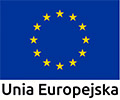Between 5 and 9 August 2019 a group of young people from Jugendhaus Shalom Gera in Germany visited Museum Treblinka. The group consisted of 28 people from Berlin, Sachsen, Thüringen, Hessen, Bremen. From German side group was coordinated by Christian, Anna Borkowska acted as translator, Anna Remiszewska was assigned as a supervisor from the Museum. Jugendhaus Shalom is a public benefit organization that deals with open work with youth. Target group are people between 10 and 27 years old. Organization implements projects from the areas of politics, music, ecology and sports. It is organized by Evangelic-Lutheran community in Gera. Every year the organization arranges few-day trips to Memorial Sites. This year they chose Treblinka.
On the first day group learned about detailed history of the Penal Labour Camp and the Execution Site. During the tour around the site young people asked a lot of detailed questions concerning functioning of the camp and its prisoners.
On the second day youth had a chance to see the exhibitions inside the Museum building and visit the Extermination Camp. Young people divided into groups worked on the following questions: ZOO at the Camp, the arrival of Samuel Willenberg to the Camp, Samuel Willenberg’s biography, story of his sister’s arrest in Czestochowa, kommando responsible for camouflage of the Camp, uprising of the prisoners in the Extermination Camp. Their work on the listed subjects was based on the reports of the former prisoner of the Camp – Samuel Willenberg.
Third day of their visit began with the discussion about the policy of Memorial Sites in Poland and Germany. Afterwards Anna Remiszewska presented the history of Janusz Korczak with use of multimedia presentation. Youth was particularly interested in Janusz Korczak’s contribution to the development of pedagogy. The group worked with the following documents: letters of Irmfried Eberl – first commandant of the Camp to his wife and materials from lawsuit of staff from Treblinka.
Group spent the next day in Warsaw getting to know places connected with the history of Jews. They visited the grounds of Warsaw ghetto and Jewish cemetery on the Okopowa street. Every day was finalized with a summary and personal reflection.
On the last day in Museum Treblinka most of the group worked voluntary at the Execution Site cleaning the signs on the symbolic crosses. The rest of the group took part in faculties trying to find answers to the following questions: What can be done for the Memorial Site? Is it worth to visit Treblinka? They also had a discussion about organizing a special program for youth from Germany here in Treblinka.
At the end participants summarized their visit at the Museum. One of the visitors paid attention to the important role of nature at the Memorial Site in Treblinka. Another person was impressed with the form of the commemoration, according to them very suited to this place and leading to reflection. The group expressed their gratitude to the employees of the Museum for their help and commitment during their visit.





